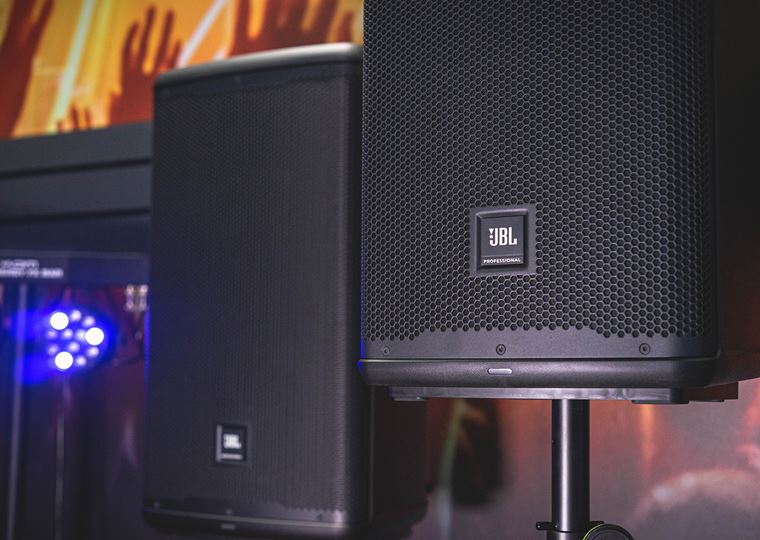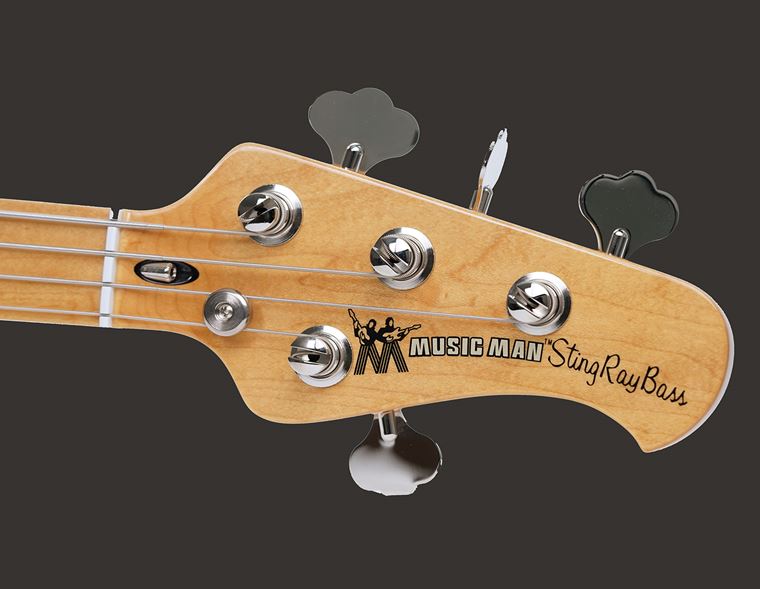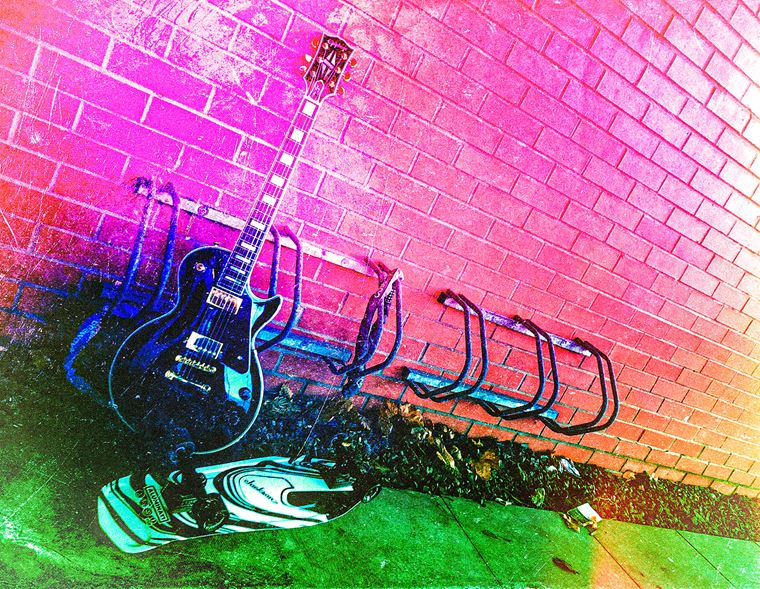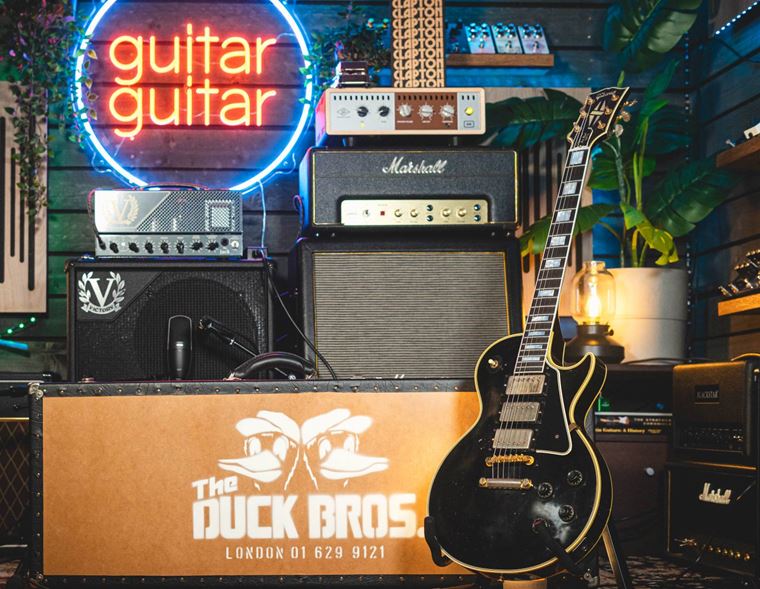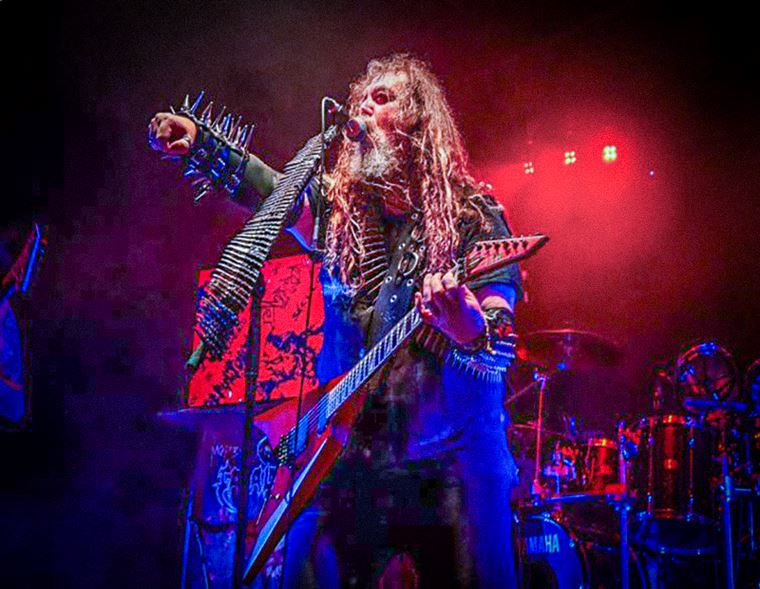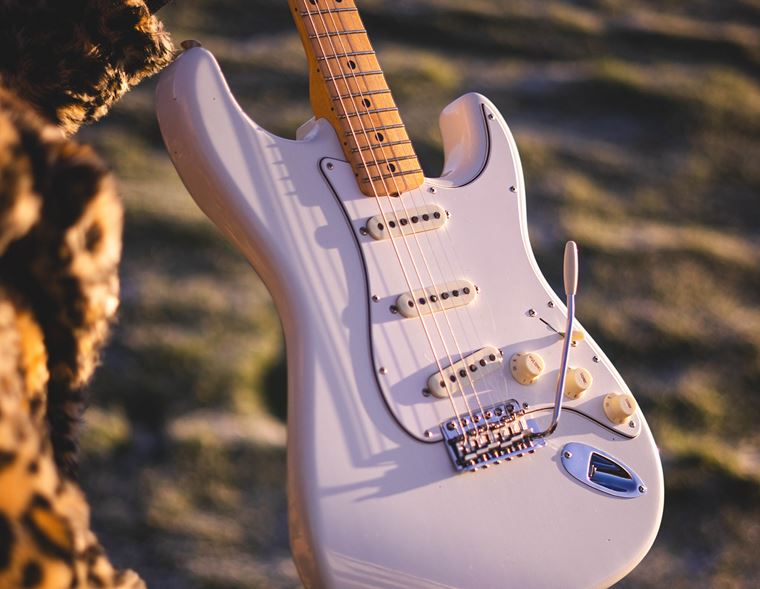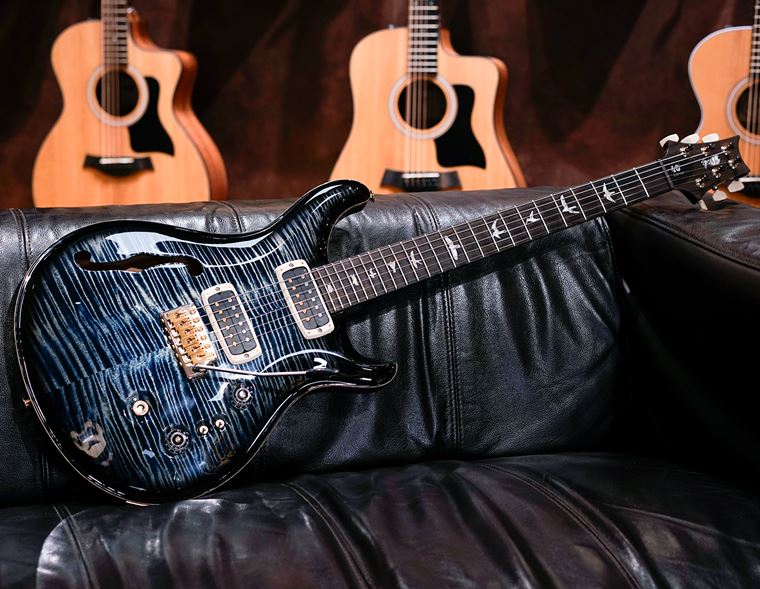Artists Who Use Folk Instruments
Published on 14 February 2024
Rock music and its adjacent genres have always been about more than just guitars, bass and drums. Of course, keyboard instruments like organs and synthesizers have played significant parts in all band situations, but so have folk instruments like violins, banjos and mandolins. After all, rock n roll came about as an amalgamation of folk and blues music, so it makes sense that these traditional instruments have a considerable part to play.
Today, I'll delve into the subject of artists who play folk instruments, highlighting some folk-based instruments - both familiar and somewhat unorthodox - and see where they fit into the musical landscape. Today, more than ever, there’s a huge diversity of music out there, and the resurgence of Appalachian and Nordic folk styles in particular have ushered in a newfound appreciation for folk instruments being juxtaposed with other styles. I'll look into this a little - just as we will with so-called ‘world music’, which opens the gates even further for folk-based instruments - but for the whole, I’ll keep relatively close to more popular rock and country choices to provide our examples.
Every country has their own folk instruments, and they are all worthy of inclusion and celebration, but we can only fit in one or two here, so please don’t see this as an ‘exclusive’ list at all! This article is designed to give the briefest taste of the folk instrument diversity that finds its way into popular music. The subject itself is far too huge and labyrinthine to cover comprehensively, but think of this as a jumping off point for your own investigations!
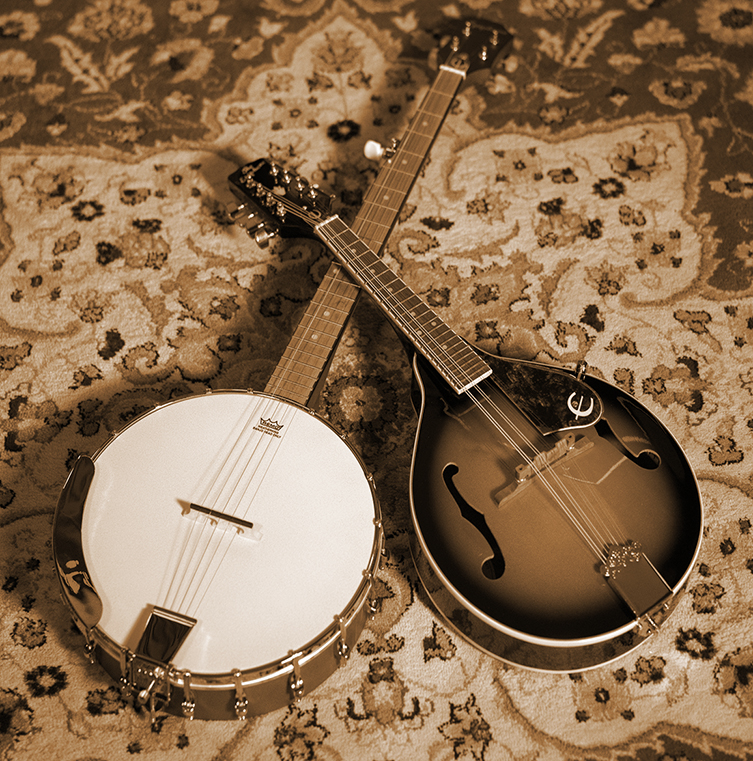
Contents
- Artists Who Play Mandolin
- Artists Who Play Violin
- Artists Who Play Banjo
- Artists Who Play Ukulele
- Artists Who Play Bagpipes
- Artists Who Play Slightly More Unorthodox Folk Instruments
- Artists Who Play The Combolin
- Artists Who Play Berimbau
- Artists Who Play Nyckelharpa
- A World of Sound, A World of Possibilities
Artists Who Play Mandolin
Let’s begin with the mandolin, a wonderful instrument that can equally provide backing rhythms, lead melodies and an instantly ‘folky’ texture to any performance or recording. The mandolin is prevalent in many Americana, Bluegrass and other ‘rootsy’ styles of music, as well as lots of Mediterranean music, where the instrument originated.
Probably the best known popular use of a mandolin is still R.E.M.'s classic song Losing My Religion, which, according to vocalist Michael Stipe, is actually a Southern American term for feeling exasperated to the point at being at your wit’s end. There you go, not a dig at religion at all.
Artists Who Play Violin
Whether you call it a violin or the more folky ‘fiddle’, this versatile instrument is widely favoured for its highly expressive voice and note range. Not every orchestral instrument translates as well across multiple genres, but the violin can quite often be found replacing the electric guitar as a lead instrument, depending on the genre. American folk and country styles are obvious examples: Amanda Shires is a significant modern day proponent of the fiddle in both her solo work and as part of Jason Isbell’s band The 400 Unit.
The violin is used in all kinds of other places, too. Warren Ellis of Nick Cave and the Bad Seeds puts one to great use in both traditional and unorthodox ways, as well as playing the little-seen tenor guitar as well. Cave and Ellis’s soundtrack work is a natural continuation of their piano and violin dynamic, too.
Artists Who Play Banjo
There’s no sound in music quite like a banjo. A stringed instrument that uses a drumhead for its resonant tone, the banjo has long been a mainstay for folk artists since it emerged from Western Africa centuries ago. Whether it's a four string tenor banjo or a larger 5-string banjo, the sound is unmistakable.
You’ll hear a banjo in a great many bands from the more traditional (Old Crow Medicine Show, above) to the trad-meets-punk stylings of Flogging Molly and many others. Tom Waits uses banjo on occasion to help add a rurality to certain compositions, and artists such as Benjamin Tod make frequent use of a banjo in their performances.
One band that routinely used all of the aforementioned instruments (and more, including accordion and tin whistle) are of course The Pogues. What conversation about folk-related music could be complete without them? Shane MacGowan’s band almost singlehandedly made trad folk instruments a vital force in the 80s, when most popular music was being made with DX7 keyboards and 808 drum machines. Fusing a post-punk energy to their almost anachronistically traditional choice of instruments, the Pogues made a noise that was simultaneously familiar and fresh.
Artists Who Play Ukulele
The humble ‘uke’ is a musical instrument which has grown hugely popular in the last decade or so. Is it because the ukulele is comparatively easy to learn? Portable? Relatively quiet for those who live in flats? It could be all of those things, but this little Hawaiian instrument (available in baritone, tenor, concert and soprano sizes) is also flat-out good fun to play!
Someone who agrees is Pearl Jam frontman Eddie Vedder, who has composed entire albums with just his velvet voice and trusty uke. Far from the dynamic distorted grunge of his day job, these uke-heavy tracks bring out a vastly different side of his artistry.
Artists Who Play Bagpipes
Instantly distinctive but maybe not the easiest of instruments to work into songs, bagpipes have one of the most evocative sounds in the world. Despite a strong Scottish cultural connection, it’s actually unclear where the instrument first originated, with Indian, Ancient Greek and many other cultures sharing an early use of them.
Since bagpipes are based around the use of a drone note, they do not easily insert themselves into many modern musical styles, which overwhelmingly rely on chord changes and even key changes. Still, it hasn’t stopped Korn’s lead singer Jonathan Davis bringing his set of pipes onto several of the band’s recordings! He also routinely plays them live too, which certainly shows commitment!
Away from traditional bagpipe music, the most surprising use of bagpipes in recent memory must be in the soundtrack to Dune, the latest adaptation of Frank Herbert’s epic sci-fi novel. Composer Hans Zimmer was told by director Denis Villeneuve that he wanted the instrument to represent one of the ancient families in the story, so Zimmer remotely conducted 30 bagpipers in an Edinburgh church for inclusion in his score! It’s safe to say that the results were as spectacular as they were unexpected!
Artists Who Play Slightly More Unorthodox Folk Instruments
Here is where I’ll gather up some more unusual or even obscure instruments from across the world and provide relatively modern examples of their use. Again, I'm just going for a little taste here today: the subject is massive and deserves a long, deep investigation by all interested parties!
Artists Who Play The Combolin
First up is an ingenious invention by everyone’s favourite folk Scottish legends, The Corries. Hit with the problem of utilising so many different stringed folk instruments throughout their live sets, the band attacked the issue head on, inventing an entirely new instrument - the Combolin - to make gigs a simpler proposition.
The Combolin is actually a couple of different instruments, but each of them is a combination of at least a guitar and a mandolin. One also has bass strings too, whilst another has 13 sitar-like sympathetic strings. Whether these Combolins actually made The Corries’ lives easier or harder is up for debate, but we salute the inventive ingenuity on hand here nonetheless!
Artists Who Play Berimbau
The Brazilian Berimbau is pretty well-known these days, given that it’s a most unusual instrument! Fans of martial arts/dance hybrid activity capoeira will definitely recognise the berimbau, which uses the long single stringed stick section with a resonant ‘body’ (normally a hollowed out coconut shell) to make a range of pitched percussion noises like nothing else on the planet. The player holds all of this against their chest or hip, whilst changing pitch with a large metal coin and tapping the string with another stick to make the noise! It sounds hard but it’s easy and fun to learn.
Away from capoeira, you can hear the berimbau on a number of Dead Can Dance songs, and most famously here on a track by Brazils’ most famous metal band, Sepultura.
Artists Who Play Nyckelharpa
Incredible Danish artist Amalie Bruun from Myrkur not only has a supersonic voice, but also mad skills on piano, guitar, violin and…nyckelharpa. Yes, it’s quite a prop, like something from a Jim Henson fantasy movie, but this instrument - a relative of the hurdy-gurdy - is quite an amazing instrument, if one can master it! The nyckelharpa is a stringed instrument with keys: you key the notes you want to hear (as with a hurdy-gurdy) and then bow the strings like a violin to make your sound.
Bruun’s music makes constant reference to folk traditions, and even Myrkur’s heavier moments utilise instruments like this to describe a sound that has otherwise not been heard before. Where do you get replacement strings when you’re on tour, though?
A World of Sound, A World of Possibilities
We hope you’ve had fun with us as I’ve taken in this brief, whirlwind tour of folk instruments, and some moments where they’ve crossed paths with other genres. Again, this is a tiny glance at a huge subject, so I'm hoping to leave you with inspiration to make your own folk journey into the lesser-used sounds in rock that are still highly attainable to the everyday musician.
Indeed, if you are relatively seasoned on the guitar, I’d suggest that you'll not have a particularly taxing time picking up one of these instruments, at least to a rudimentary level. Well, perhaps the nyckelharpa is a bit ambitious right off the bat, but the fundamentals of the mandolin, banjo and certainly the ukulele will be eminently graspable without requiring an overwhelming commitment. Try one! It could open up your music in ways you’ve never considered before. In the meantime, we bid you well on whichever musical journey you find yourself on!




